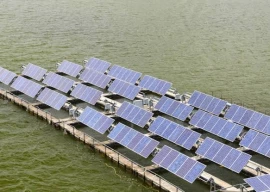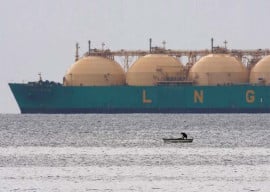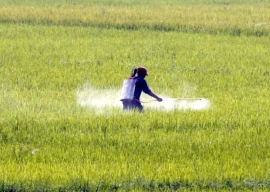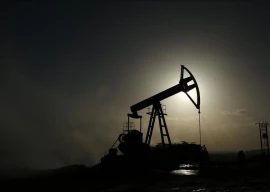
Deficiencies in the legal structure and infrastructure and lack of strategic planning have marred the liquefied natural gas (LNG) supply chain in Pakistan.
Analysing the LNG framework and its supply chain, auditors have pointed out several deficiencies like lack of a proper structural and legal framework and proper planning, which harm LNG business.
They said that it resulted in a circular debt of billions of rupees, which had trapped state-run utilities. In its report for financial year 2021-22, the Auditor General of Pakistan said that gas utilities were helping in the sale and purchase of LNG between importers and buyers without any agreement.
Gas utilities and consumers have no back-to-back agreements, which lead to disputes among stakeholders in the LNG supply chain. Auditors presented a critical review of the situation and highlighted key issues. State-run companies import LNG according to demand from the gas utilities. However, due to inconsistent demand from the utilities, the LNG importing companies are compelled to procure gas from spot market with less delivery time and at higher prices.
Furthermore, refusal from end-consumers to receive the demanded quantity of re-gasified LNG upsets the entire supply chain. Auditors also pointed out that Pakistan LNG Limited (PLL) had rescheduled the delivery of term cargoes for the period when LNG was available at a low cost.
Spot LNG prices stood low in the summer of 2020 due to Covid-19. It was required to secure LNG for the upcoming winter season, which was not done, and in November and December 2020, gas was procured at higher rates for winter season.
Auditors said that stakeholders also failed to develop LNG infrastructure (terminals for re-gasification capacity, no storage and pipeline constraints) as envisaged in the LNG Policy 2011.
Consequently, existing infrastructure is used to maintain the RLNG supply chain, which has given rise to a dispute between two gas companies. Sui Southern Gas Company (SSGC) withholds RLNG volumes by transporting less quantity in violation of a third-party agreement (TPA) whereas Sui Northern Gas Pipelines Limited (SNGPL) stops payments on account of terminal/ re-gasification and administrative charges and also bears exchange loss adjustment payable to Pakistan State Oil (PSO)/ PLL.
Auditors observed that the Petroleum Division, in consultation with all, makes need/ demand assessment for LNG. Discrepancies in the assessment of stakeholders including the Power Division hamper comprehensive planning.
In line with a decision of the Economic Coordination Committee (ECC), RLNG was required to be supplied to the public/ private sector/ bulk consumers under firm contracts with a “take-or-pay” clause. But no firm back-to-back contracts were finalised with independent power producers (IPPs) and contracts with government power producers (GPPs) were finalised only up to 66% take-or-pay (instead of 100%).
However, later the ECC decided that RLNG supply to IPPs would be on “as and when” basis. This inconsistency in decision-making resulted in delay in finalisation of a gas sale-purchase agreement (GSPA) with IPPs and execution of TA-1 (tripartite agreement) among PSO, SSGC and SNGPL could not be done.
Thus, the whole RLNG sale/ purchase business remained at risk. In the absence of assurance of payments for the contracted offtake, the three public sector entities – PSO, SSGC and SNGPL – were exposed to the risk of possible financial insolvency. Unpaid subsidies by the government along with receivables from the power sector are other factors responsible for the piling up of circular debt. Currently, PSO is to receive over Rs300 billion from SNGPL on account of LNG supply.
On the other side, SNGPL’s receivables have risen to Rs95.666 billion and Rs75.498 billion on account of cost of RLNG/ diversion to domestic consumers, and Wapda and IPPs/GPPs respectively. Exchange loss adjustment had also gone up to Rs5.315 billion by September 30, 2021.
Published in The Express Tribune, November 27th, 2022.
Like Business on Facebook, follow @TribuneBiz on Twitter to stay informed and join in the conversation.








1734899716-0/image-(15)1734899716-0-270x192.webp)
1734899549-0/image-(16)1734899549-0-270x192.webp)
















COMMENTS
Comments are moderated and generally will be posted if they are on-topic and not abusive.
For more information, please see our Comments FAQ